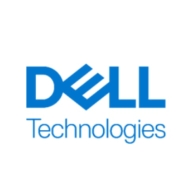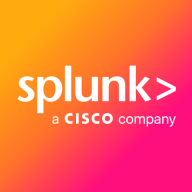

Splunk Enterprise Security and Moogsoft compete in enterprise security and IT operations. Splunk has an edge in complex environments due to its comprehensive data analysis and threat detection capabilities, while Moogsoft excels in AI-driven event management and noise reduction.
Features: Splunk offers advanced log management, versatile data processing, and real-time data analysis without predefined schemas, integrating well with third-party security solutions. Moogsoft highlights noise reduction, event correlation, and AI-driven incident management, improving incident management and reducing alert fatigue.
Room for Improvement: Splunk faces challenges with interface complexity, permissions management, and a need for better documentation and predefined use cases. Moogsoft requires better integration with third-party tools, improved visualization, and enhancements in AI/ML capabilities. Both could improve setup and configuration processes.
Ease of Deployment and Customer Service: Splunk supports diverse deployment models across cloud environments but often requires expert guidance, with customer service responsiveness varying. Moogsoft offers straightforward deployment with flexible options and generally effective support, though increased visibility and engagement would be beneficial.
Pricing and ROI: Splunk's high data ingestion fees can be a barrier for smaller companies, yet it offers significant ROI for large enterprises through enhanced security and operational efficiencies. Moogsoft's cost-effective, consumption-based pricing model appeals to budget-conscious organizations, delivering substantial ROI by streamlining incident management and reducing operational costs.
ROI depends on how we integrate our IT operations with Moogsoft, as it can reduce our workload, downtime, and resolution time effectively, ultimately delivering better solutions based on mean time to resolution.
The documentation for Splunk Enterprise Security is outstanding. It is well-organized and easy to access.
We couldn't calculate what would have been the cost if they had actually gotten compromised; however, they were in the process, so every investment was returned immediately.
On average, my SecOps team takes probably at least a quarter of the time, if not more, to remediate security incidents with Splunk Enterprise Security compared to our previous solution.
We have paid for Splunk support, and we’re not on the free tier hoping for assistance; we are a significant customer and invest a lot in this service.
I have had nothing but good experiences with Splunk support, receiving timely and helpful replies.
We've had great customer success managers who have helped us navigate scaling from 600 gigs to 30 terabytes.
We currently rely on disaster recovery and backup recovery, which takes time to recover, during which you're basically blind, so I'm pushing my leadership team to switch over to a clustering environment for constant availability.
They struggle a bit with pure virtual environments, but in terms of how much they can handle, it is pretty good.
It is easy to scale.
Sometimes Moogsoft experiences stability issues due to bugs or internal problems, leading to downtime.
They test it very thoroughly before release, and our customers have Splunk running for months without issues.
Splunk has been very reliable and very consistent.
It provides a stable environment but needs to integrate with ITSM platforms to achieve better visibility.
Introducing machine learning and AI features would enhance Moogsoft, streamlining IT operations, incident detection, and response management.
Improving the infrastructure behind Splunk Enterprise Security is vital—enhanced cores, CPUs, and memory should be prioritized to support better processing power.
Splunk Enterprise Security is not something that automatically picks things; you have to set up use cases, update data models, and link the right use cases to the right data models for those detections to happen.
For any future enhancements or features, such as MLTK and SOAR platform integration, we need more visibility, training, and certification for the skilled professionals who are working.
I saw clients spend two million dollars a year just feeding data into the Splunk solution.
The platform requires significant financial investment and resources, making it expensive despite its comprehensive features.
I find it to be affordable, which is why every industry uses it.
Moogsoft offers various benefits, including incident response, reduced noise alert fatigue, increased availability and uptime, helping companies gain a better understanding of their IT environment, proactively addressing issues, and improving services.
This capability is useful for performance monitoring and issue identification.
I assess Splunk Enterprise Security's insider threat detection capabilities for helping to find unknown threats and anomalous user behavior as great.
Splunk Enterprise Security provides the foundation for unified threat detection, investigation, and response, enabling fast identification of critical issues.
| Product | Market Share (%) |
|---|---|
| Splunk Enterprise Security | 22.4% |
| Moogsoft | 3.7% |
| Other | 73.9% |


| Company Size | Count |
|---|---|
| Small Business | 5 |
| Midsize Enterprise | 4 |
| Large Enterprise | 11 |
| Company Size | Count |
|---|---|
| Small Business | 110 |
| Midsize Enterprise | 50 |
| Large Enterprise | 257 |
Moogsoft is an AI-based solution that ensures continuous availability and prevents downtime by utilizing machine learning and advanced correlation on your organization’s stack. Moogsoft detects incidents before they can escalate, notifies the proper response teams, and applies machine learning in order to understand patterns to help prevent similar issues in the future.
Moogsoft sits on top of an organization’s production stack and extends across automation, service management, log indexing, and notification tools. Algorithmic Noise Reduction automatically reduces event volumes to unique alerts without relying on rules, filters, or models. This enables teams to analyze all monitoring ecosystem events with no noise and no blind spots.
With Moogsoft extensive integration options, users can aggregate all their observable data into a single location and create automated workflows to detect and remediate incidents in third-party systems, ensuring their system remains unharmed. Moogsoft’s anomaly detection tools detect incidents as they emerge, allowing security teams to respond swiftly before they impact customers.
Teams can easily set up their own integrations using Moogsoft’s REST API and webhook. The solution provides guidance for each step, allowing users to import data from whatever tool they need with just a few mouse clicks.
Some of Moogsoft’s top features and benefits include:
Reviews from Real Users
Moogsoft stands out among its competitors for a number of reasons. A few major ones are its monitoring tools, its user-friendly interface, and its strong AI capabilities.
Vivek S., an O&M Lead at a communications service provider, writes, “The most valuable feature is the monitoring manager. Different components and different monitoring tools integrate with and send data to Moogsoft.
This is a user-friendly solution. It is very easy and very comfortable to use, with everything available on a single screen.
The AI component allows you to check previous cases and diagnose problems easily. It will show you what happened last time the same event occurred.”
Splunk Enterprise Security delivers powerful log management, rapid searches, and intuitive dashboards, enhancing real-time analytics and security measures. Its advanced machine learning and wide system compatibility streamline threat detection and incident response across diverse IT environments.
Splunk Enterprise Security stands out in security operations with robust features like comprehensive threat intelligence and seamless data integration. Its real-time analytics and customizable queries enable proactive threat analysis and efficient incident response. Integration with multiple third-party feeds allows detailed threat correlation and streamlined data visualization. Users find the intuitive UI and broad compatibility support efficient threat detection while reducing false positives. Despite its strengths, areas such as visualization capabilities and integration processes with cloud environments need enhancement. Users face a high learning curve, and improvements in automation, AI, documentation, and training are desired to maximize its potential.
What Are the Key Features of Splunk Enterprise Security?In specific industries like finance and healthcare, Splunk Enterprise Security is instrumental for log aggregation, SIEM functionalities, and compliance monitoring. Companies leverage its capabilities for proactive threat analysis and response, ensuring comprehensive security monitoring and integration with various tools for heightened operational intelligence.
We monitor all IT Operations Analytics reviews to prevent fraudulent reviews and keep review quality high. We do not post reviews by company employees or direct competitors. We validate each review for authenticity via cross-reference with LinkedIn, and personal follow-up with the reviewer when necessary.